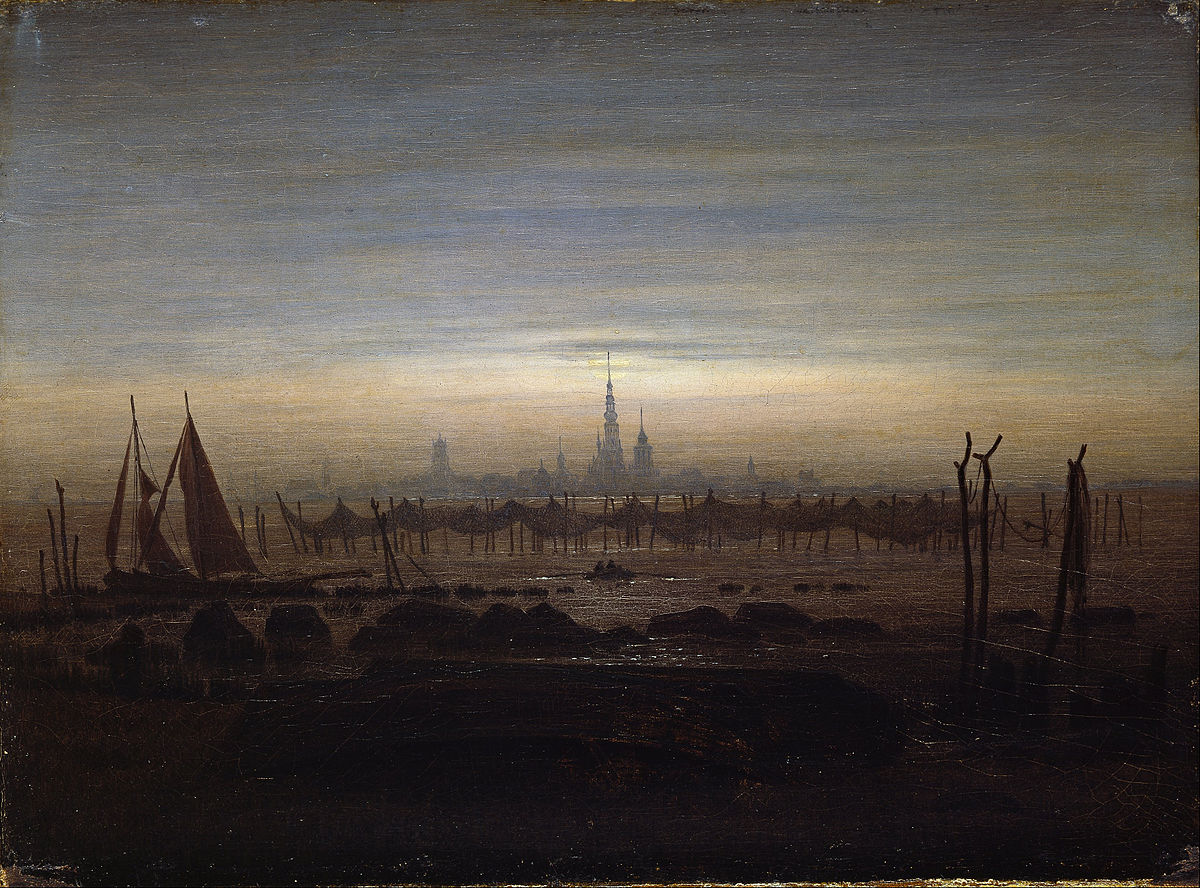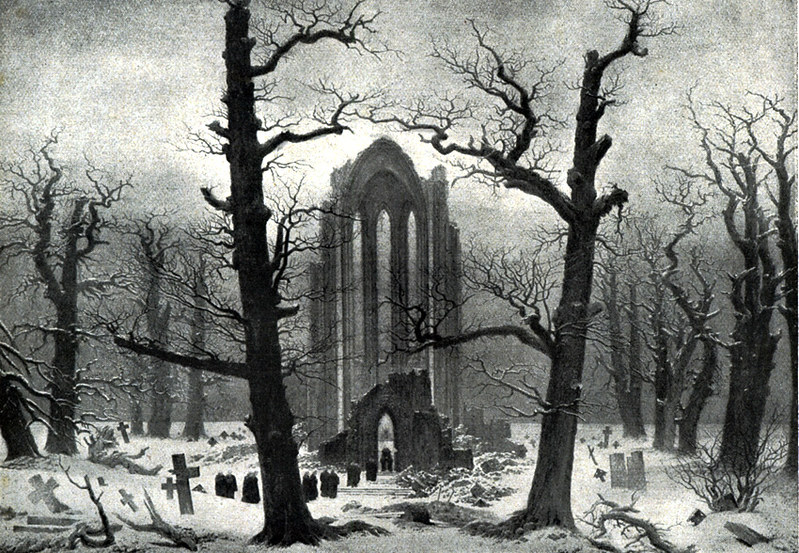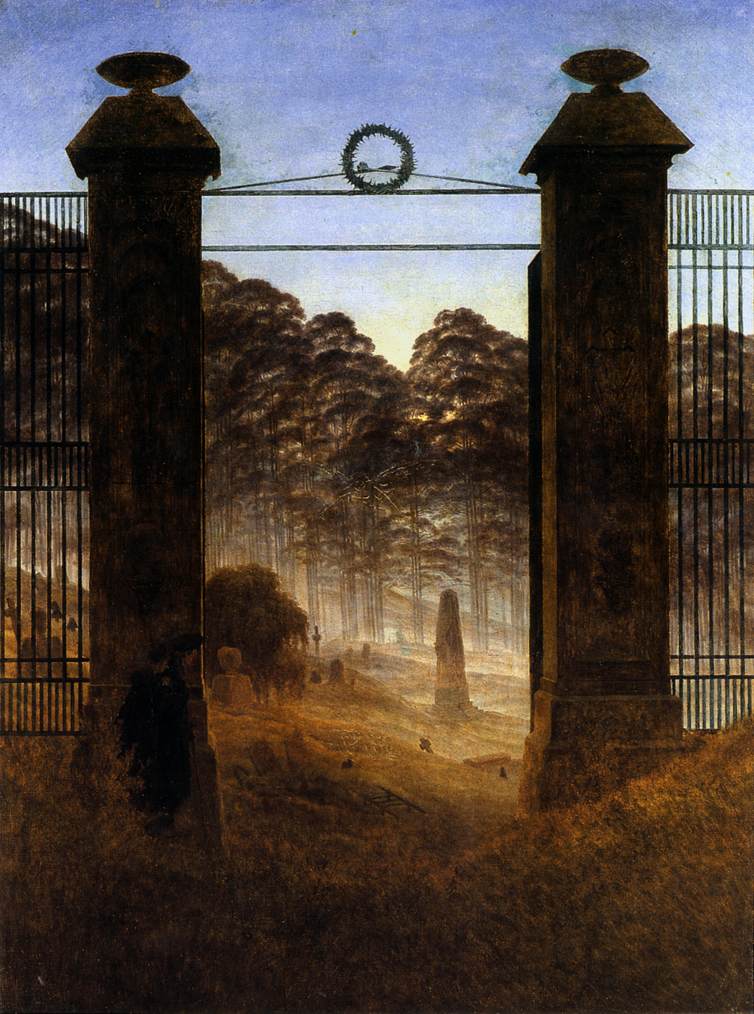Eugène Delacroix in 10 Paintings: Poetry, Passion, and Power
Early 19th-century French art was a battle between cool, crisp, precisely observed Neoclassicism and Romanticism’s passion for emotion, drama,...
Catriona Miller 3 July 2024
8 November 2024 min Read
Caspar David Friedrich was a master of romantic atmosphere. Gothic ruins, contemplative figures silhouetted against skies and morning mists were his domain. Like scenes from a horror movie, they embody all the Gothic clichés and reflect his obsession with death and the afterlife. Are you ready for a little contemplation? Discover Caspar David Friedrich’s romantic landscapes.

A procession of monks, some of whom are carrying a coffin, heads toward the gate of a ruined Gothic church in the center of the painting. Only two candles light their way. A newly dug grave yawns out of the snow in the foreground, near which several crosses can be seen. The waxing crescent moon appears in the sky.
The subject of death so typical for the artist is related to what Friedrich had lived through since his childhood: his mother died in 1781, one year later, his sister Elisabeth died of smallpox; his brother Johann drowned while he was trying to save Friedrich, who had sunk below the ice in 1787, and in 1791, his sister Maria died of typhus. Even Friedrich attempted suicide around 1801 and later, in 1809, his father died while Friedrich was painting The Monk by the Sea.
Read more about this painting here.

Caspar David Friedrich’s landscapes were supposed to create a religious feeling. The magnificent nature was the evidence that God exists. He often presented people as overwhelmed by their environment.

Monastery Graveyard In The Snow was destroyed or lost during the air raids of World War II, and only a black and white photograph remained. It is hard to imagine a more Gothic painting.

These two figures are probably Friedrich himself, at right, and his friend and disciple August Heinrich. Fascination with the moon was typical among the German Romantics, who regarded the motif as an object of pious contemplation.

By 1820, Friedrich was living as a recluse and was described by friends as the “most solitary of the solitary”. In June 1835, Friedrich suffered his first stroke, which left him with minor limb paralysis and greatly reduced his ability to paint. As a result, he was unable to work in oil; instead, he was limited to watercolor, sepia and reworking older compositions. The motif of the graveyard now began to appear with greater frequency in his oeuvre.

This melancholic painting symbolizes Friedrich’s loneliness. Winter, dying nature, they all promise death. Only the waxing moon high in the sky, symbolizes Christ and the promise of rebirth for the artist.
DailyArt Magazine needs your support. Every contribution, however big or small, is very valuable for our future. Thanks to it, we will be able to sustain and grow the Magazine. Thank you for your help!